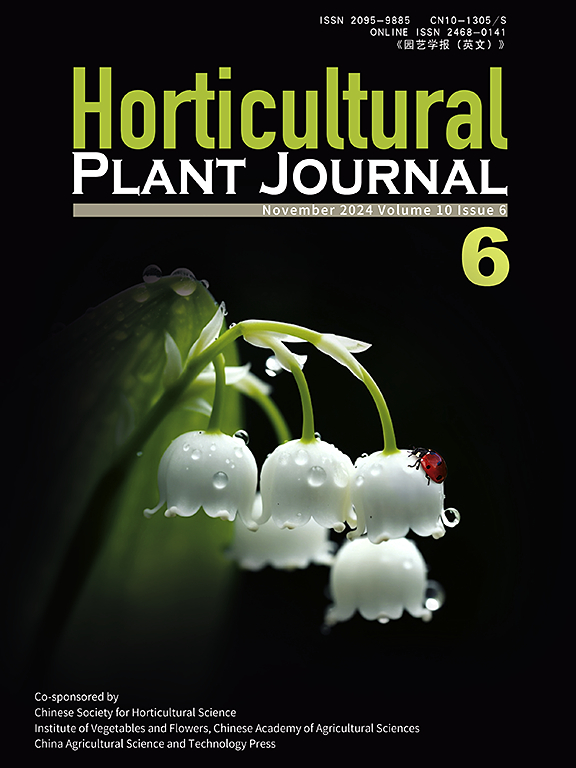AcPI and AcAP3 coordinately regulate sepal-petal formation in pineapple
IF 6.2
1区 农林科学
Q1 HORTICULTURE
引用次数: 0
Abstract
Sepals and petals form the peels of pineapple fruits, which influence the size of cavities below the surface of the fruits (so-called “fruit eye”) and subsequently the fruit quality and edible rate. In this study, to investigate the underlying mechanisms controlling septal-petal formation in pineapple, we utilized a mutant of variety ‘Yulinglong’ with petaloid sepals for comparative analyses with the wild type. Phenotypic and microscopic observations confirmed the either partially or completely petalized structure of the sepals of the mutant. Comparative gene expression analysis identified two MADS-box family membersAcPI和AcAP3协调调节菠萝萼片的形成
萼片和花瓣形成菠萝果实的果皮,影响果实表面下空腔的大小(所谓的“果眼”),进而影响果实的质量和可食用率。为了研究菠萝花瓣形成的潜在机制,我们利用具有花瓣状萼片的突变体‘玉陵龙’与野生型进行了比较分析。表型和显微观察证实了突变体萼片部分或完全花瓣化的结构。比较基因表达分析发现两个MADS-box家族成员AcPI和AcAP3可能与花瓣状萼片相关。在拟南芥和烟草中的异源过表达实验证实了它们在控制萼片/花瓣的身份和器官发生中的功能,并证实了它们在将萼片转化为花瓣中的作用。蛋白互作实验和基因表达谱表明,AcPI和AcAP3可能在菠萝花芽原基分化过程中协同决定花器官发生。研究结果对菠萝花器官特性和果皮结构形成的分子调控具有重要意义,可用于提高菠萝果实品质和可食性。
本文章由计算机程序翻译,如有差异,请以英文原文为准。
求助全文
约1分钟内获得全文
求助全文
来源期刊

Horticultural Plant Journal
Environmental Science-Ecology
CiteScore
9.60
自引率
14.00%
发文量
293
审稿时长
33 weeks
期刊介绍:
Horticultural Plant Journal (HPJ) is an OPEN ACCESS international journal. HPJ publishes research related to all horticultural plants, including fruits, vegetables, ornamental plants, tea plants, and medicinal plants, etc. The journal covers all aspects of horticultural crop sciences, including germplasm resources, genetics and breeding, tillage and cultivation, physiology and biochemistry, ecology, genomics, biotechnology, plant protection, postharvest processing, etc. Article types include Original research papers, Reviews, and Short communications.
 求助内容:
求助内容: 应助结果提醒方式:
应助结果提醒方式:


